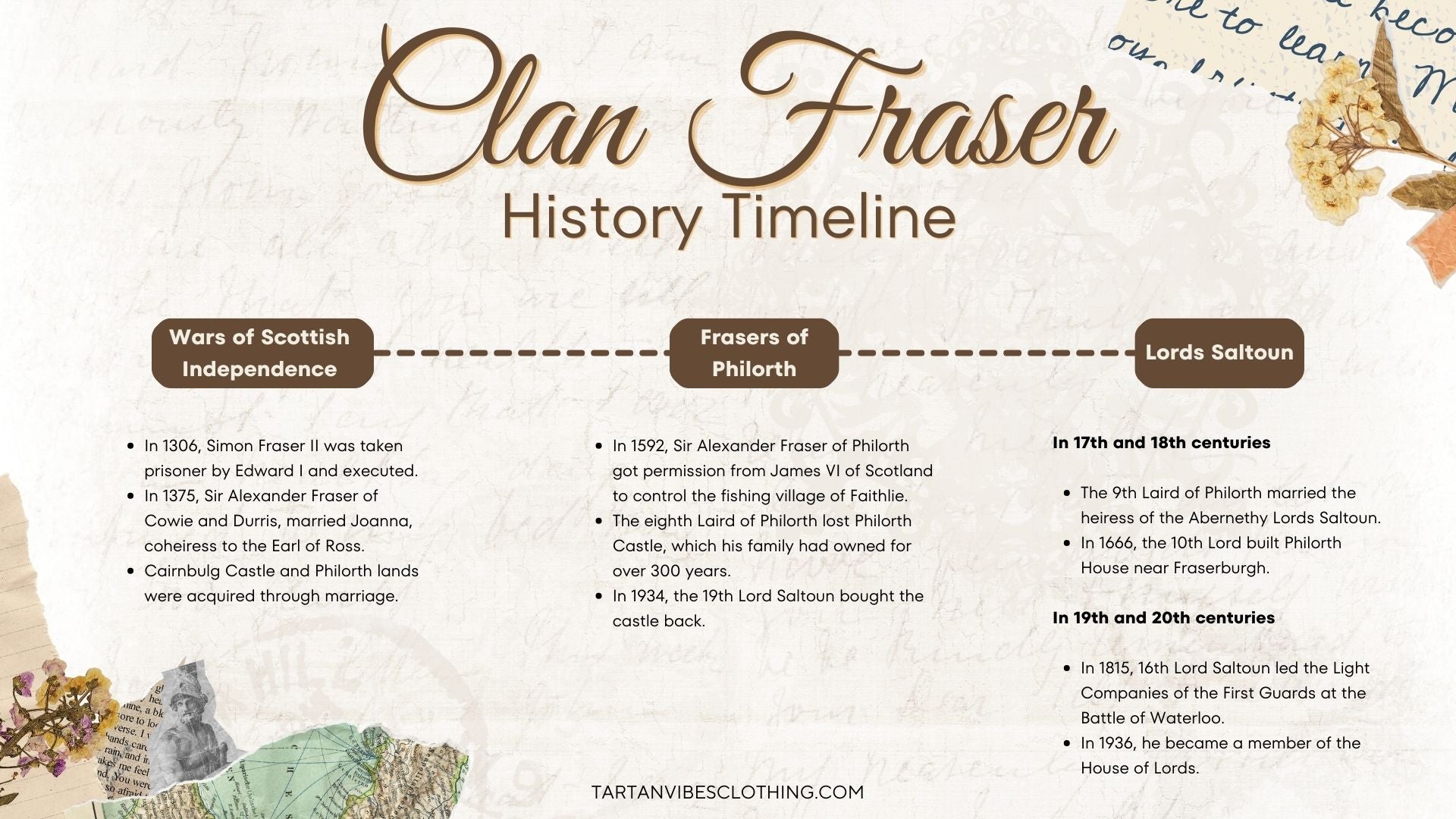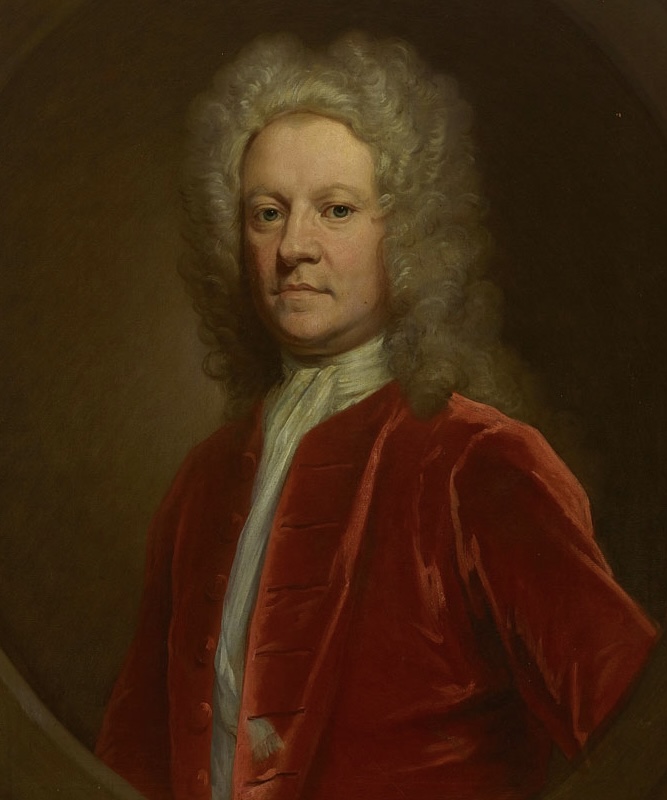Clan Fraser Chief: Notable Leaders and Their Contributions
by Aimee Li on Jun 24, 2024
Table of Content
I. Introduction
The Clan Fraser, a prominent and powerful clan in Scotland, has made a lasting impact on the country's history. Starting in the Lowlands of Scotland and participating in important historical moments, the Frasers have played a crucial role in shaping Scotland's past and present.
This article explores the Clan Fraser Chief who have guided the clan through centuries of change and challenge.
A. Clan Fraser Chief: The Origin of Clan Fraser
The exact origins of the surname Fraser are still unknown, and different theories have been suggested over time. One theory proposes that the Frasers originated from Plantagenet Anjou in France. However, the Oxford Dictionary of Family Names (2016) questions this idea, as France has no corresponding place names for the earliest spellings like de Fresel, de Friselle, and de Freseliere. Instead, it suggests that the name could have been altered by Anglo-French scribes from a Gaelic source, resulting in Fraser.

Another theory connects the name to the French patronymic Fresel, which meant ribbon or braid in Old French and likely referred to merchants then. While the surnames Fresel and Frezel are now linked to Normandy and Artois/French Flanders, not Anjou, due to their historical connections with the Plantagenets, some linguistic theories associate Fraser with fraise, which means strawberry in French. The first documented appearance of a Fraser in Scotland dates back to approximately 1160 when Simon Fraser owned land at Keith in East Lothian.
B. Clan Fraser Chief: Clan Fraser History

1. Wars of Scottish Independence
Generations later, Simon Fraser was captured and executed by Edward I of England in 1306 while fighting for Robert the Bruce. Alexander Fraser of Cowie, related to Simon, became Bruce's chamberlain and married Bruce's sister, Mary.

Sir Simon Fraser, brother of Alexander Fraser, is an ancestor of the chiefs of Clan Fraser of Lovat. His grandson, Sir Alexander Fraser of Cowie and Durris, solidified his position by marrying Joanna, the Earl of Ross's younger daughter and co-heiress, in 1375. This marriage led to him gaining Cairnbulg Castle and Philorth lands.
2. Frasers of Philorth

In 1592, James VI of Scotland gave Sir Alexander Fraser of Philorth charters for Faithlie village, now known as Fraserburgh. He was allowed to start a university there, but it didn't happen due to religious issues. The eighth Laird of Philorth constructed Fraserburgh Castle, later transformed into Kinnaird Head lighthouse. This led to financial problems, causing the family to lose Philorth Castle after owning it for over three centuries. It wasn't until 1934 that the 19th Lord Saltoun repurchased the castle.
3. Lords Saltoun
In 17th and 18th centuries
The 9th Laird of Philorth married the heiress of the Abernethy Lords Saltoun. Their son Alexander Fraser became the 11th Lord Saltoun. Alexander was injured in the Battle of Worcester in 1651 but saved by his servant, James Cardno. In 1666, the 10th Lord constructed Philorth House close to Fraserburgh, where they resided until it was destroyed by fire in 1915.

Sir Alexander Fraser of Durris was Charles II's physician and studied at Aberdeen. He joined the king during his 1650 campaign and later served in the Scottish Parliament after the Restoration, mentioned in Samuel Pepys' diaries. Unlike their distant relatives in Clan Fraser of Lovat, who supported the Jacobites, the Fraser family stayed out of the Jacobite uprisings.
In 19th and 20th centuries
In 1815, the Light Companies of the First Guards were under the command of the sixteenth Lord Saltoun at the Battle of Waterloo. Following that, Lord Saltoun of the nineteenth century was captured and held as a prisoner in Germany during World War I. In 1936, he became a member of the House of Lords and strongly supported the Royal National Lifeboat Institution.
📜 Please also see more of the Chronicles of Clan Fraser History: Tales of Valor and Virtue
II. Clan Fraser Chief: Prominent Leaders and Chieftains
Throughout its long and storied history, Clan Fraser has been led by remarkable individuals who have shaped the clan's destiny and played significant roles in Scottish and British history. This section highlights three prominent leaders and chieftains who exemplify Clan Fraser members' diverse achievements and contributions.
A. James Baillie Fraser (1783–1856)

In 1813, Fraser took a bold step by traveling to India as a merchant. During the Nepal War, he found his brother William, and they explored the lower Himalayas together. James meticulously recorded their journey to the Ganges and the Jumma sources in his diary, vividly describing the plants, rock formations, and local traditions they encountered.
After their expedition in 1820, he decided to share his experiences with the world by publishing his journal and a series of stunning illustrations in a book titled Views in the Himalayan Mountains, showcasing his artistic skills. Not only did he capture the essence of the Himalayas, but he also depicted life in Calcutta through his highly praised drawings. Before concluding his travels, Fraser continued his adventures in Persia, adding more exciting stories to his remarkable journey before returning to Scotland.
B. Peter Fraser (1884–1951)

Peter Fraser, who hails from Fearn in Rossshire, made the bold decision to move to London and become a member of the Independent Labour Party in 1908. Then, at the young age of twenty-five in 1910, he took a leap of faith and emigrated to New Zealand. Despite facing potential imprisonment during World War I due to his vocal opposition to conscription, Fraser remained steadfast in his beliefs.
As time passed, his political career blossomed, culminating in 1935 when he was appointed Minister of Education following the Labour Party's electoral triumph. After the unfortunate passing of Michael Savage, Fraser stepped into the role of Prime Minister, leaving an indelible mark on history. Among his most notable achievements was his instrumental role in establishing the United Nations, showcasing his dedication to global cooperation and peace.
C. George Sutherland Fraser (1915-1980)
III. Conclusion
The tale of Clan Fraser is a complex and intricate fabric made up of bravery, faithfulness, and strength. Starting from their beginnings in ancient Scotland to their important contributions in molding contemporary events, the Frasers have made a lasting impression on global affairs. The clan's heritage goes beyond just warfare and political scheming; it also includes cultural innovations, scientific progress, and literary triumphs. This dynamic past is mirrored in the leader of Clan Fraser, each contributing to the lasting story of the Frasers' effect and power.
Frequently Asked Questions
Which Frasers died at Culloden?
Clan Fraser were prominent Jacobite supporters, and in the Battle of Culloden, Clan Fraser suffered great losses. Charles Fraser of Inverallochy led the Frasers into battle at Culloden and was fatally wounded during the battle.
What is the difference between Clan Fraser and Fraser of Lovat?
Clan Fraser is a Scottish clan of the Scottish Lowlands. It is not to be confused with the Clan Fraser of Lovat who are a separate Scottish clan of the Scottish Highlands (though with a common ancestry).
Who owns Fraser Castle in Scotland?
The National Trust for Scotland
It was sold in 1976 to the National Trust for Scotland, who maintain the castle and a substantial amount of the grounds today. The National Trust forbids anyone to benefit financially from their property without prohibitive costs.
What is the Clan Fraser's motto?
The Fraser clan motto is "Je Suis Prest" (I Am Ready), and the clan crest is a buck's head.












